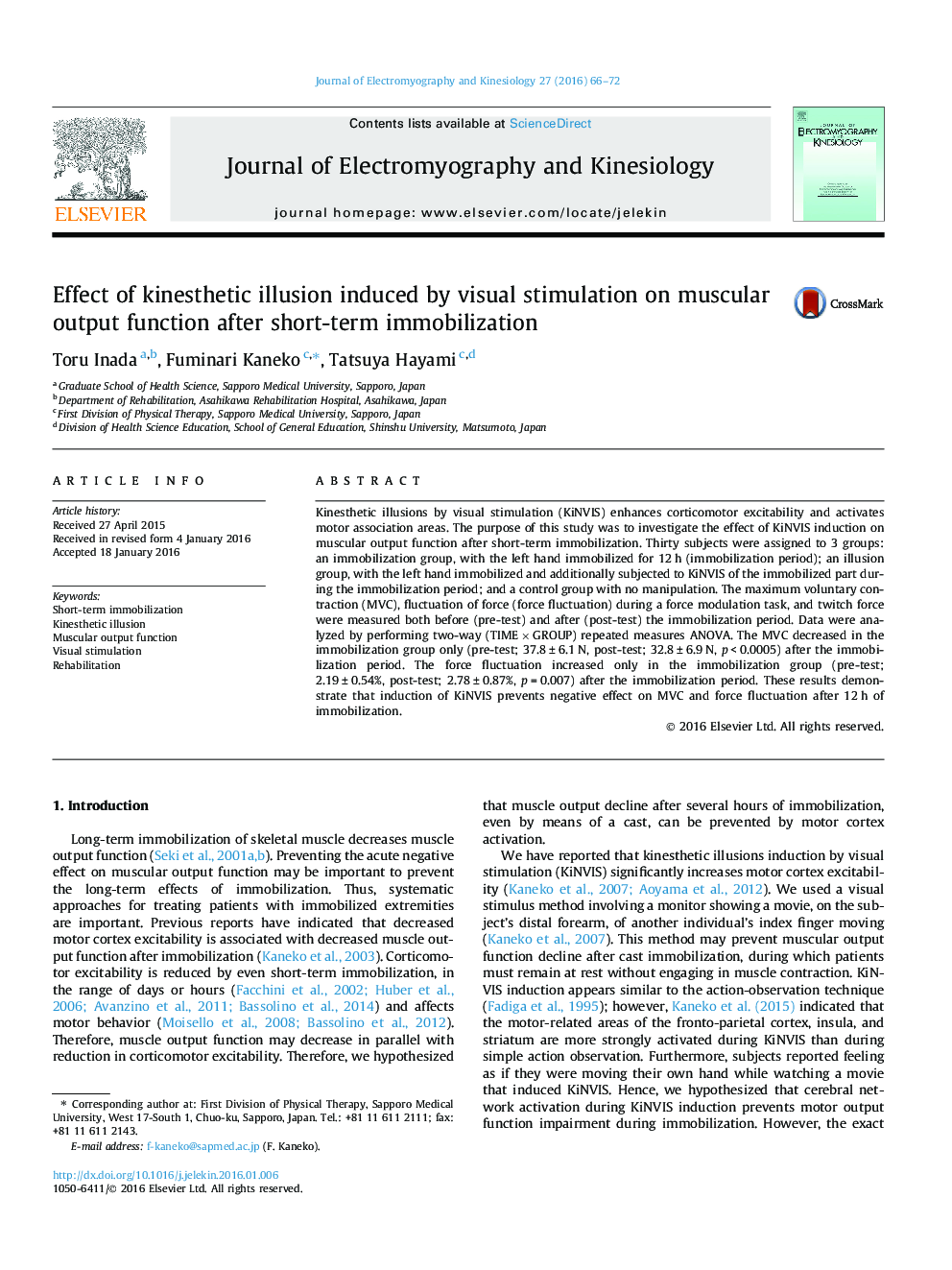| Article ID | Journal | Published Year | Pages | File Type |
|---|---|---|---|---|
| 4064420 | Journal of Electromyography and Kinesiology | 2016 | 7 Pages |
Kinesthetic illusions by visual stimulation (KiNVIS) enhances corticomotor excitability and activates motor association areas. The purpose of this study was to investigate the effect of KiNVIS induction on muscular output function after short-term immobilization. Thirty subjects were assigned to 3 groups: an immobilization group, with the left hand immobilized for 12 h (immobilization period); an illusion group, with the left hand immobilized and additionally subjected to KiNVIS of the immobilized part during the immobilization period; and a control group with no manipulation. The maximum voluntary contraction (MVC), fluctuation of force (force fluctuation) during a force modulation task, and twitch force were measured both before (pre-test) and after (post-test) the immobilization period. Data were analyzed by performing two-way (TIME × GROUP) repeated measures ANOVA. The MVC decreased in the immobilization group only (pre-test; 37.8 ± 6.1 N, post-test; 32.8 ± 6.9 N, p < 0.0005) after the immobilization period. The force fluctuation increased only in the immobilization group (pre-test; 2.19 ± 0.54%, post-test; 2.78 ± 0.87%, p = 0.007) after the immobilization period. These results demonstrate that induction of KiNVIS prevents negative effect on MVC and force fluctuation after 12 h of immobilization.
